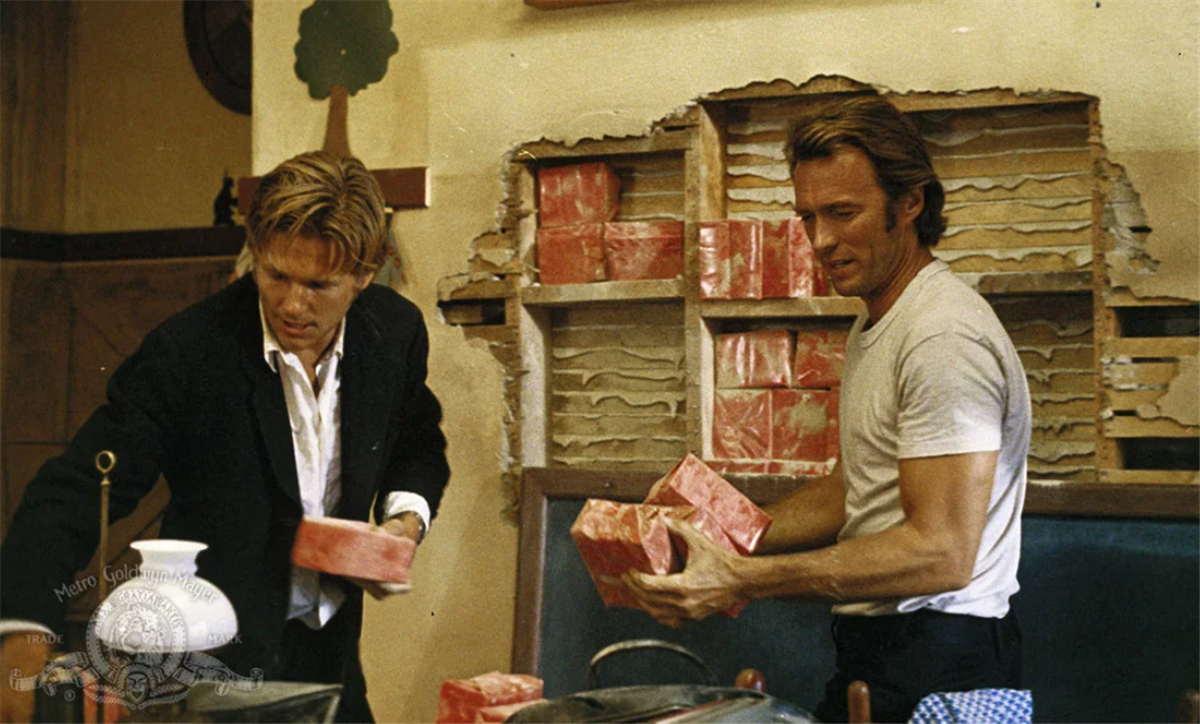In Hollywood, where egos often clash and artistic visions diverge, it’s not uncommon for actors and directors to have differing opinions on how a scene should be played out. However, when the director in question is Clint Eastwood, a man known for his no-nonsense approach to filmmaking, these disagreements can lead to memorable stories.
One such story involves Jeff Bridges, a young actor at the time, who managed to make Eastwood break one of his cardinal rules during the filming of the 1974 crime comedy, Thunderbolt and Lightfoot. This incident starkly contrasts the experiences of Tom Hanks and Leonardo DiCaprio, who found Eastwood’s directorial style less accommodating.
Clint Eastwood and Jeff Bridges: An Unlikely Pair

Clint Eastwood and Jeff Bridges, two film industry titans, first crossed paths on the set of Thunderbolt and Lightfoot, a unique blend of the buddy road trip and suspenseful heist genres. Eastwood, already a seasoned actor and director, was known for his efficient, no-frills approach to filmmaking.
On the other hand, Bridges was an up-and-coming actor who preferred to delve deeper into his characters, often seeking multiple takes to fully explore a scene. Their contrasting styles set the stage for an intriguing dynamic during the filming of this underrated classic.
Clint Eastwood’s Exception for Jeff Bridges
Eastwood’s reputation for sticking to the script and avoiding unnecessary takes is well-known in Hollywood. However, during the filming of Thunderbolt and Lightfoot, Jeff Bridges challenged this approach. After a particular scene, Bridges approached director Michael Cimino, asking for another take to explore a different interpretation of his character.
Cimino, deferring to Eastwood, allowed the additional take, marking a rare instance where Eastwood broke his own rule. In a moment that would become part of Hollywood lore, Eastwood reportedly said, “Yeah, give the kid another chance.”
This moment highlighted Eastwood’s respect for Bridges’ artistic process and showcased his flexibility.
The Experience of Tom Hanks and Leonardo DiCaprio

While Bridges was able to find common ground with Eastwood, other actors have had less positive experiences. Tom Hanks, who worked with Eastwood on the biographical drama Sully, likened Eastwood’s directorial style to wrangling animals, finding it intimidating and unyielding.
Similarly, Leonardo DiCaprio, who starred in the biographical drama J. Edgar, also directed by Eastwood, had a tense encounter when he requested a retake of a scene. Both actors have since stated that they would not work with Eastwood again, highlighting the polarizing nature of Eastwood’s directorial approach.
Clint Eastwood’s directorial style, while effective, is not for everyone. His no-nonsense approach and aversion to unnecessary takes can be challenging for actors who prefer a more exploratory process. However, as the story of Jeff Bridges shows, Eastwood is not inflexible. He is willing to break his own rules when presented with a compelling argument.
Despite the negative experiences of some actors, Clint Eastwood’s impact on the film industry is undeniable, and his unique approach to filmmaking continues to produce memorable performances and critically acclaimed films.
